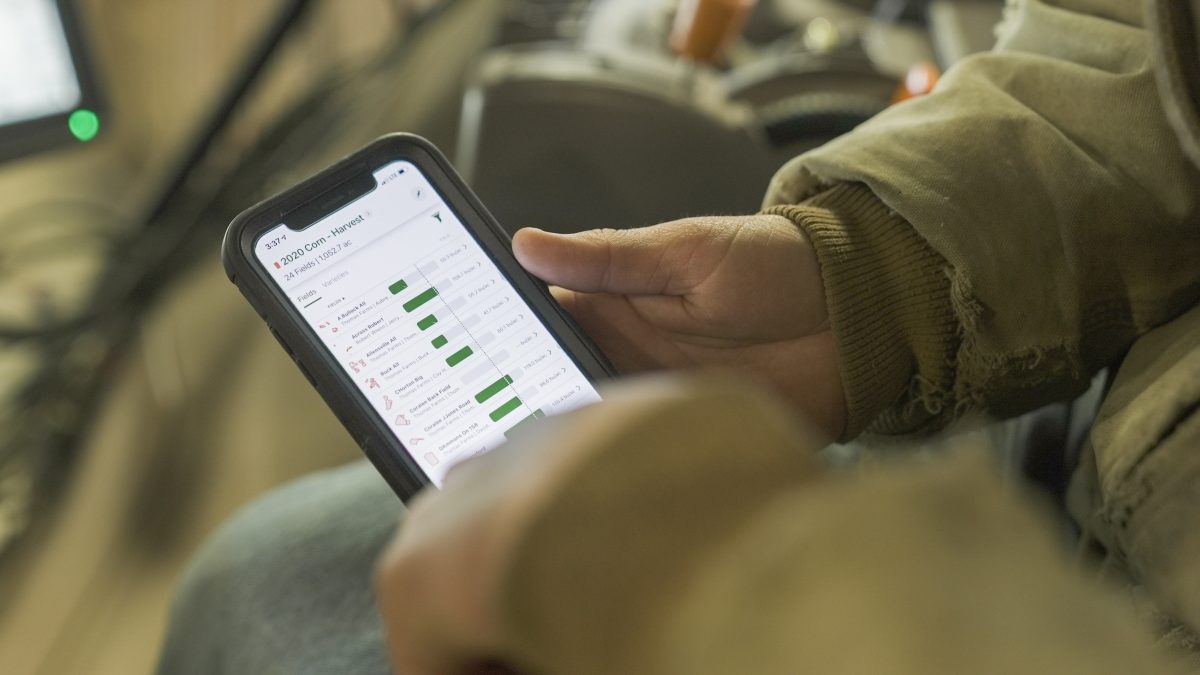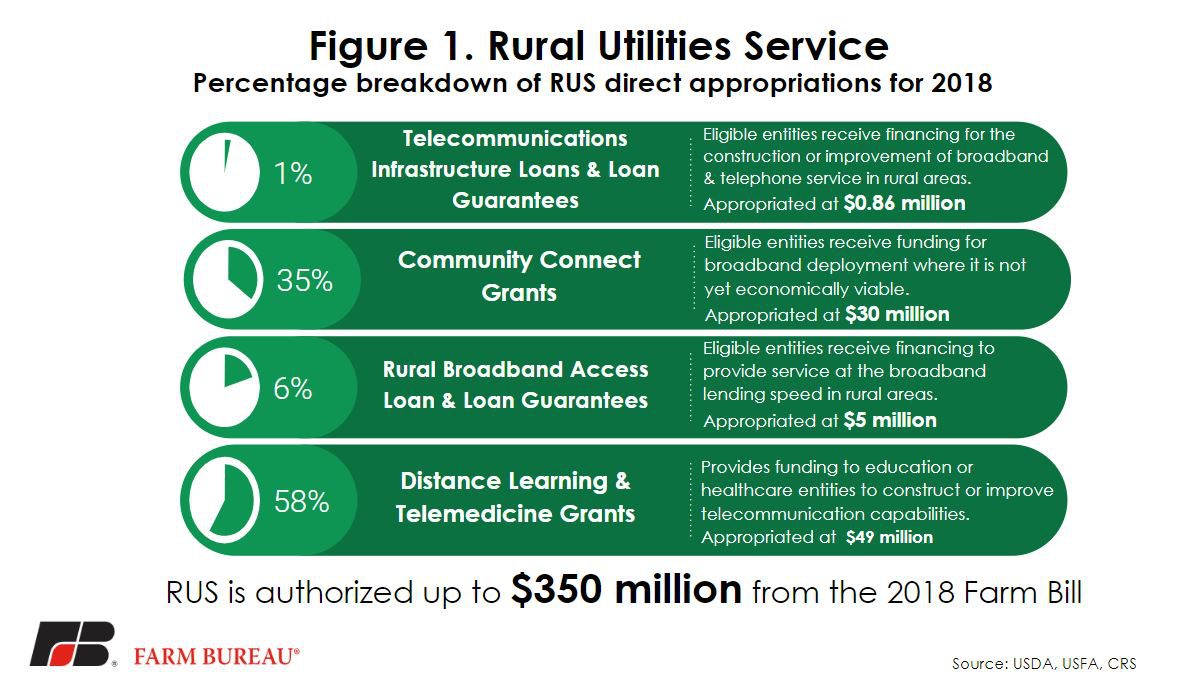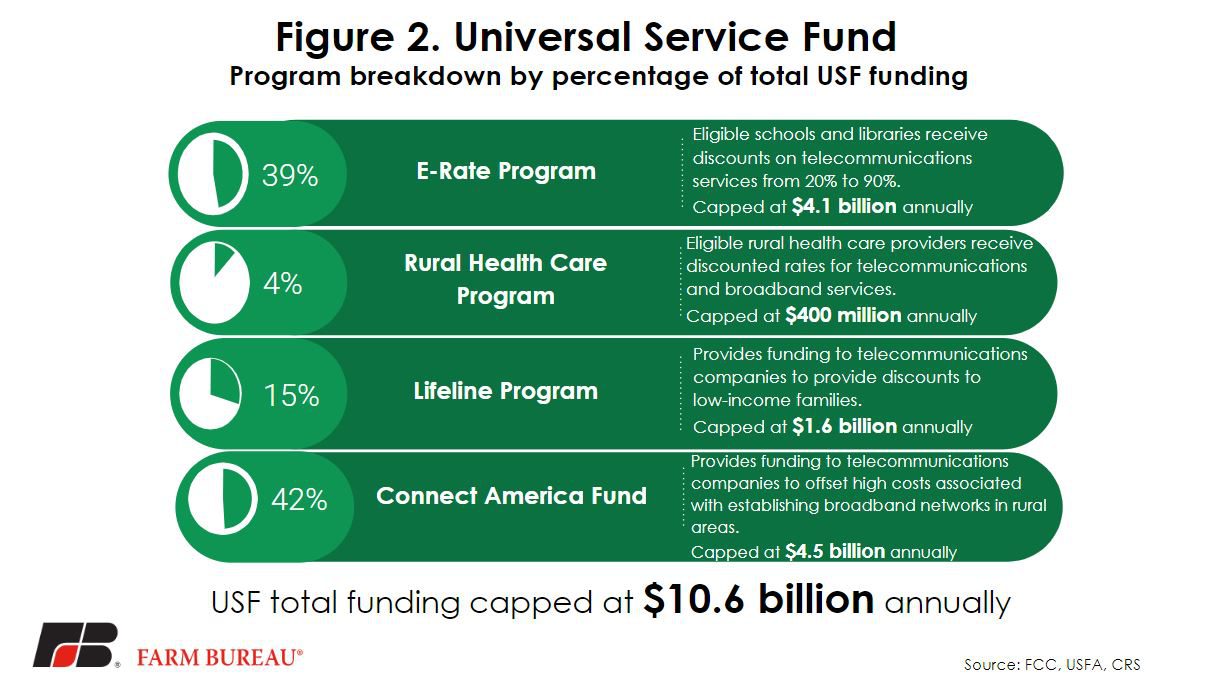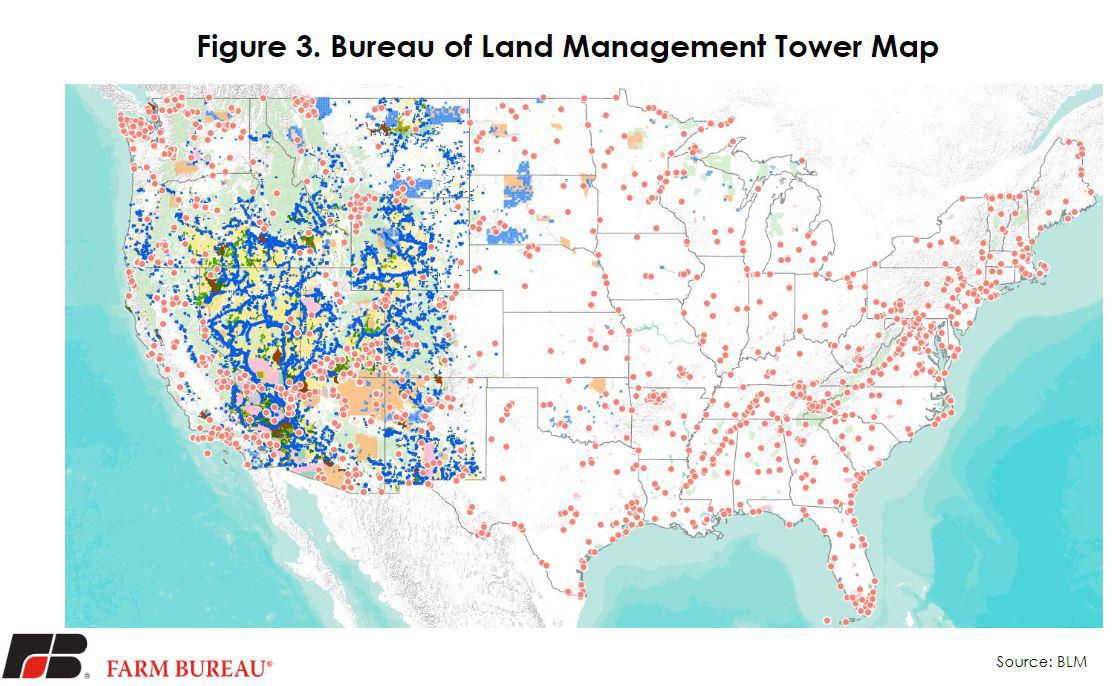American Broadband Initiatives: A Work in Progress
TOPICS
Rural BroadbandMegan Nelson
Economic Analyst

photo credit: Mark Stebnicki, Used with Permission
Megan Nelson
Economic Analyst
Access to affordable and reliable broadband is critical to modern agricultural practices and the quality of life for rural Americans. Technological advances are relying more and more on connectivity, which makes it increasingly imperative to close the digital divide between rural and urban areas of America. According to the FCC’s 2018 Broadband Deployment Report, 24 million rural Americans still lack adequate access to broadband. Additionally, 29 percent of farmers do not have internet access, making it nearly impossible to use technologically advanced, efficient, economical and environmentally responsible farming tools and techniques. Access to broadband is no longer a luxury, it’s a necessity.
Recently, the administration published the “American Broadband Initiative Milestones Report,” which highlights the major government initiatives for deploying broadband infrastructure and bringing e-connectivity to rural populations. The recommendations are centered around e-connectivity, quality of life, rural workforce, technology and economic development. The recommendations focus primarily on strengthening current programs by streamlining federal permitting processes and maximizing the impact of federal funding streams.
Federal Funding
Service providers primarily utilize two federal agencies to subsidize the cost of infrastructure buildout to rural areas: USDA’s Rural Utilities Service and the Universal Service Fund.
Rural Utilities Service
USDA’s RUS provides infrastructure support to rural areas for expanding economic opportunities and improving the quality of life for rural Americans. Within RUS, the telecommunications programs strive to provide funding for the deployment of telecommunications technologies in unserved and/or underserved areas.
The telecommunications programs include Community Connect Grants, Distance Learning and Telemedicine Grants, Rural Broadband Access Loan and Loan Guarantee, and Telecommunications Infrastructure Loans and Guarantees. Eligible participants for these programs include for-profit as well as not-for-profit entities, municipalities and cooperatives. These programs were authorized in the 2018 farm bill for a total of up to $350 million but require annual appropriations for funding.
Congress appropriated $600 million for USDA’s RUS to create a new pilot program known as the ReConnect Broadband Grant and Loan Program. ReConnect offers federal funding opportunities to establish broadband networks in rural areas through both grants and loans to eligible entities capable of providing retail broadband service to rural families and businesses currently lacking sufficient broadband access.

Universal Service Fund
Established in 1997, the Universal Service Fund was originally tasked with providing voice telecommunications services to all Americans by ensuring that rates remain affordable in areas that have less access. However, after the passage of the American Recovery and Reinvestment Act of 2009, access to broadband was included in USF’s national goals. Designated by the FCC, the Universal Service Administrative Company, an independent non-profit, administers the four USF programs: E-rate Program, Rural Health Care Program, Lifeline Program and Connect America Fund.

The USF is financed by a percentage of the telecommunications service provider’s revenue. The companies contributing to the fund include: wireline phone companies, wireless phone companies, paging services and some Voice over Internet Protocol providers.
The percentage of revenue each provider is expected to contribute is updated quarterly by the FCC and is based on the ratio of total projected quarterly collection divided by the adjusted quarterly contribution base. For the first quarter of 2019, the total program collection is $2 billion, with the adjusted quarterly contribution base of $10.2 billion, representing a contribution factor of 20 percent. Often, these charges are passed on to the customer and identified by a line item on telephone bills noted as Universal Service.
Federal Implementation
Leveraging Federal Assets to Assist with Deployment
As part of the administration’s broadband initiative, the Department of the Interior has been tasked with inventorying and mapping over 7,000 tower locations throughout the nation. Now in a publicly accessible GIS format, the data will help agencies use existing federal property to help build out broadband infrastructure into rural communities. Private companies may now access tools like the Telecommunication Infrastructure Sites and Cases interactive maps to locate existing federal towers for their broadband expansions and therefore lower the cost of the buildout. Figure 3 is a screenshot of the interactive map with each red dot representing a federal tower location.

Federal Permitting
The American Broadband Initiative has also made streamlining federal permitting a key objective. The process of accessing federal lands – which make up nearly 30 percent of the U.S. – or federal assets can be costly and time consuming for private broadband providers. For this reason, the initiative aims to lessen the burden on contractors, therefore lowering the cost of broadband deployment and increasing the speed in which it can take place.
The primary issue facing broadband providers regarding permitting is that broadband deployment can involve up to six different federal departments to facilitate changes made to or on federal lands. A key milestone of the initiative is for GSA to work collaboratively with agencies such as USDA, DOI, Department of Transportation, Department of Homeland Security and the National Telecommunications and Information Administration to replace the common application form (SF-299) for all telecommunication permit requests. The American Broadband Initiative has also created a one-stop-shop for federal permitting of broadband infrastructure at BroadbandUSA. Further simplifications and improved workflows are slotted to be deployed throughout the next two years with an end date of March 2021 for full implementation.
Trending Topics
VIEW ALL